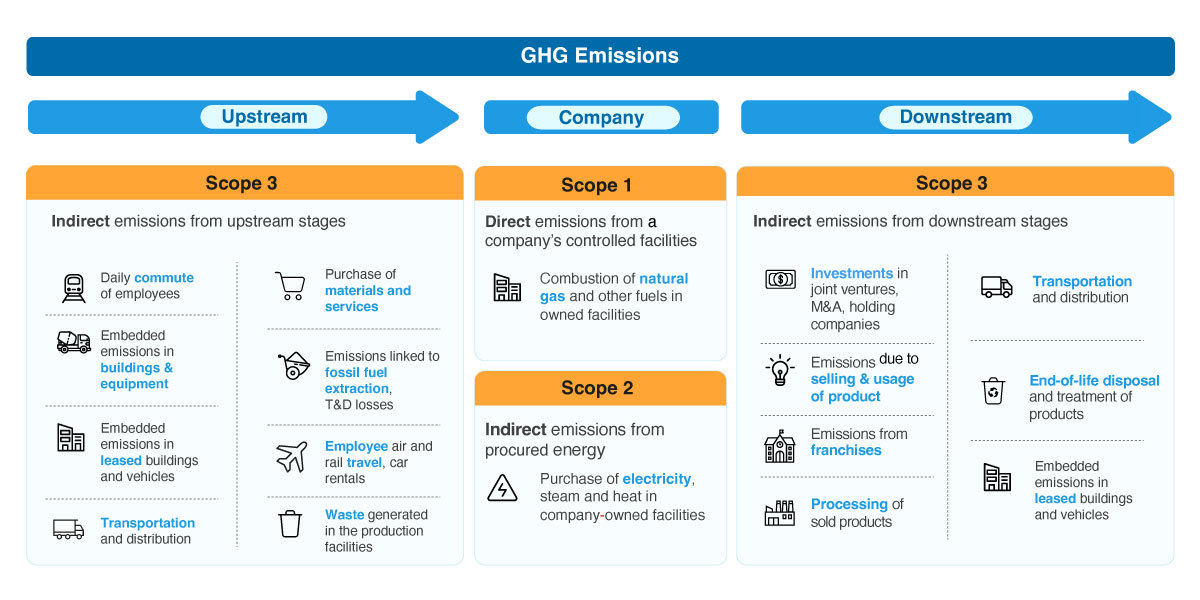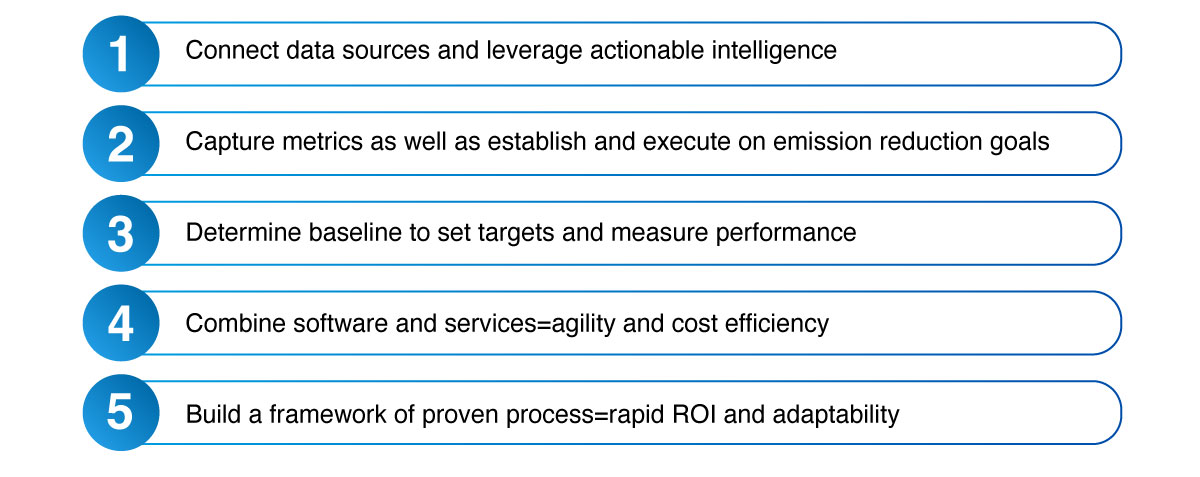The growing urgency to combat the dangers of global warming by reducing greenhouse gas (GHG) emissions means every business has its role to play. One way to make a crucial difference now is by reducing your company’s Scope 3 emissions.
Most companies have a good understanding of how to tackle Scope 1 and 2 emissions — carbon emissions that an organization generates either directly, through its facilities, or indirectly, through the purchase of energy. Scope 3 emissions, however, arise up and down the value chain, from suppliers upstream to distributors and customers downstream.
Scope 3 emissions often comprise a considerably high percentage of the total emissions associated with a company — sometimes over 80%, depending on the sector. Reducing Scope 3 emissions can therefore provide for the most impactful sustainability gains but thorny challenges remain, as these emissions are much more difficult to track, measure and reduce.
Upstream and Downstream Emissions a Corporation Can Influence

How GEP Can Help Reduce Scope 3 Emissions
Given the size and complexity of Scope 3, GEP starts with a procurement and supply chain evaluation to help your company understand your emissions baseline and segment your categories and suppliers. Addressing your company's Scope 3 emissions represents a tremendous opportunity to engage with suppliers and build valuable relationships, which may result in reduced Scope 3 emissions, increased efficiencies, and accelerated innovation.
The Advantages of GEP’s Data-Driven Approach
Scope 3 emissions are challenging to capture, track and measure fully. That's why GEP stands out among the competition — because of our access to data and ability to turn that data into actionable insights.

Our track record
- Via an in-depth spend analysis to identify focus areas for suppliers as well as for a category-specific approach and extensive market research, GEP created a sophisticated data model for a client to calculate its Scope 3 emissions baseline and designed an Emissions Dashboard with potential to develop data-driven strategies for reducing Scope 3 emissions
- Supported a global Fortune 500 CPG company to set climate ambition and sourcing strategy. Developed a climate target backed by a comprehensive decarbonization road map. Designed dashboard providing access to all projects and financials by location
- Partnered with a Fortune 500 manufacturing and chemicals company to optimize its warehousing supply chain network in Europe, resulting in a 19% direct reduction in its carbon footprint and 18% reduction in costs
- Designed a fleet electrification strategy for a $14-billion U.S. agriscience company with a three-step-pilot approach and a comprehensive guide for electric vehicle adoption

